Physics XIX. In the 18th century (I1)
Atomic theory
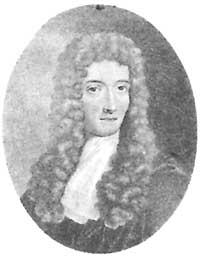
Atomic theory is in some way valid from the ancient Greeks. Leucipo and Democritus were the first atomists, but Aristotle was the rival of this theory and if we take into account their influence in the times, it is not surprising that this hypothesis was radically relegated both in antiquity and in the Middle Ages. The Renaissance made these ideas known. Galileo liked the atoms and Newton and Boyle considered them in their physical and chemical reasoning. However, they were then relegated, although they were echoed in scientific thought.
XIX. At the beginning of the 20th century some scientists resorted again to this theory to express certain physical peculiarities, the three states of matter and the quantitative results of some chemical combinations.
After ignoring the theory of flogisto, it became clear that matter had three states: solid, liquid and gaseous. Each substance appears in any of these situations, but if conditions allow it may appear in any of the three. Water, for example, although it usually appears in a liquid state, can also appear in the form of ice or steam.
On the other hand, they also began to investigate the laws of chemical reactions. It was made mainly with gases, since it was easier than in other situations. By then the gases had already lost their ancient mysterious and spiritual appearance and were studied like any other body.
After several studies carried out with the precisions that allowed the conjuncture of the time, some (against the prestigious scientists Lavoisier, Prout, Richter and Berthollet) showed that the parts always enter the same quantity when forming any chemical compound. This composition constant was very important in the development of the new chemistry.

Thus, it is known that the water, coming from any source or origin, is always formed by hydrogen and oxygen and that the weight of these components is in proportion 1/8. Hence came the idea of combination weight; if we consider as unit the weight of hydrogen, the combination weight of oxygen will be zortziko.
At that time John Dalton (1766-1844) joined. He was a school teacher and in his spare time he immersed himself in mathematics, chemistry and physics. After obtaining the job in Manchester, he began to investigate with gases and saw that the theory of atoms was the most suitable to express the peculiarities of gases. Subsequently, these same ideas were used in chemistry and demonstrated that combinations could be expressed by sums of fractions with specific weight of the elements. In his New Systems of Chemical Philosophy, published in 1808, he said:
"In all my studies on chemical synthesis, the guide is based on the following general standards:
- When through two bodies we only have a combination and there is no reason, we must think that it is a binary combination.
- When two combinations appear we must think that they are binary and ternary.
- When three combinations are obtained, one binary and the other two are ternary.
The application of these standards to the chemical phenomena tested so far can reach the following conclusions:
- That water is a binary compound of hydrogen and oxygen and that the relative weights of the two elemental atoms appear approximately in the 1/7 ratio.
- Due to hydrogen and the binary nitrogen compound, the relative weights of both atoms are approximately 1/5.
- Nitrous gas is a binary compound of nitrogen and oxygen and its atoms weigh between five and seven.
- Carbonic oxide is a binary compound formed by a carbon atom and two oxygen atom weighing twelve; carbonic acid is a ternary (sometimes binary) compound formed by a carbon atom and two oxygen atom, weighing nineteen, etc. In all these cases we give the weight to hydrogen, adjusting the unit of weight to its atoms..."
In this report Dalton made some mistakes: the combination weights given are sometimes not suitable, for example when instead of eight for oxygen with hydrogen gives seven.
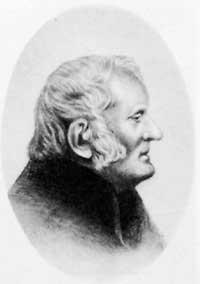
By not treating more than two elements in a compound, assuming that the atom to atom combination is binary is another mistake and was mistaken when applying water and ammonia structures. However, Dalton took a big step in the history of science, turning what was a diffuse hypothesis into scientific theory.
To represent the elemental atoms, Dalton used dots, asterisks and crosses. The Swedish chemist Berzelius (1779-1848) refined this method and invented the one used today, that is, he expressed the relative weight corresponding to his atomic weight using a letter to represent an element. Thus, "H" does not express hydrogen in its entirety, but a unit of hydrogen mass — a gram, a kilogram, or whatever is desired — and in the system mentioned by "O" represents sixteen of the mass of the oxygen atom.
Berzelius' greatest contribution was to find atomic weights as accurate as possible or, rather, combination equivalents. He discovered new elements, researched many compounds and made great strides in the field of mineralogy. Together with Davy he investigated the basic laws of electrochemistry, beginning to highlight the relationship between chemistry and electricity. He advanced too much for his time: he thought that all atoms have one type or another of electricity and that these electrical forces would be necessary to give combinations, that is, he saw in each compound the sum of two parts of opposite electric charge, as well as the influence of electric charges when a combination was given between the two compounds.

This dualistic theory was not very adequate and soon had to leave room for more appropriate others. However, we know that chemical and electrical phenomena are closely related, although not as simple as Berzelius thought.
When the investigation of the phenomena produced in the combination of gases was deepened, the shortage of atomic ideas was highlighted. Gay-Lussac (1778-1850) found that by combining gases, their volumes do so in simple relationships. Avogadro (1776-1856), according to Dalton's theory, concluded that the results of Gay-Lussac must assume that the equal volumes of all gases must maintain simple relations between the number of atoms.
Therefore, that is, by the results of the combinations of gases and so many physical assays, it was concluded that it was necessary to distinguish between the chemical atom and the physical molecule: while the first would be the smallest part of a matter in the combinations, the second would be the smallest part in free state. The simplest way to express the Avogadro hypothesis is to accept that there are equal amounts of molecules in the same volumes of gases, and so it was assumed.
Returning to the case of water, it was observed that by combining two volumes of hydrogen, and therefore two molecules, with a volume of oxygen, or molecule, two volumes of steam, or molecules, are obtained. The simplest way to express it is by assuming that each molecule of hydrogen and oxygen contains two chemical atoms and that the water vapor molecule is H2O, i.e. 2H2+ O = 2H2O. Therefore, since the combined weight of oxygen is zortziko and each oxygen atom is associated with two hydrogen atoms, considering the atomic weight of hydrogen as a unit, the atomic weight of oxygen is hexadecimal.
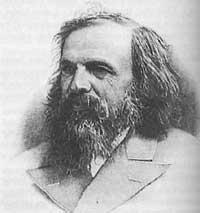
This required adapting the combinational weights of Dalton to obtain the true atomic weights of the elements. This was done for the first time in a totally systematic way by Cannizzaro. Thus, when reacting an oxygen atom with two hydrogen atoms, it was observed that it had somehow the same value as two hydrogens, and that equivalence was called "valence", so, taking hydrogen as a unit, that is, recognizing that it is its valence, oxygen had two valence. This new concept of valence gave rise to a fruitful harvest.
Dalton checked twenty elements, then the discoveries continued. The use of new research methods in chemical trials was common to find new elements. Due to the galvanic current, Davy (1778-1829) obtained alkaline metals of sodium and potassium in 1807. Subsequently, spectral analysis revealed rubidium, cesium, thallium and gallium. Radioactivity has revealed other elements such as radio and its family, but most of them are XX. They are results of the twentieth century.
In 1815, after Prout, other researchers sought the relationship between the atomic weight of the elements and their physical characteristics, but we had to wait for 1869 to achieve this. In this year Julius Lothar Meyer and Mendeleiev ordered the elements according to the atomic weight, which allowed to observe the periodicity of the elements and show a certain affinity in groups of eight rows, so that a table could be formed by placing elements of similar characteristics by columns. This table paved the way for assuming dubious atomic weights and Mendeleiev filled the gaps in the table announcing some unknown elements, some of which were then actually found.
Mendeleiev considered that his table was purely empirical. However, in view of these relationships, there arose in some the old idea of the common basis of matter. Some thought that this base could be hydrogen and then, taking its atomic weight as a pattern, they said that all other elements would require integers, but, although in many cases this is fulfilled approximately, in others it is not given at all. We will have to wait half a century to find that common base of matter and give all atomic weights with integers, but those achievements will be the XIX. not accessible by subordinate means.
Kinetic Gas Theory
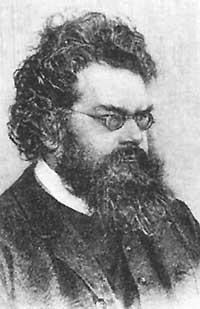
In 1845 Waterston sent the Royal Society a report explaining the kinetic theory of gases and developing the same theory; unfortunately, that report remained unstudied for years. However, after observing the affinity between heat and energy, this hypothesis achieved great success and Joule succumbed to it. For their part, these two researchers calculated the average speed of molecular movement. In 1857 Clausius published the first complete kinetic theory of matter.
It was based on the hypothesis that in a gas the molecules move in all directions and that the shocks between them were totally elastic. The total energy of translation of all molecules is the measurement of the total heat content of the gas and the average energy of each molecule the measurement of temperature. From there, the pressure p can be calculated mathematically demonstrating that 1/3 nmv2, where n is the number of molecules per unit of volume, the mass of each of those m and the mean value of the square of velocity v. Thus, nm is the total mass of gases per unit of volume, that is, its density, so if the temperature of a gas is constant v2, the pressure is directly proportional to its density and inversely proportional to its volume (Charles law). If we keep two gases at the same pressure and temperature, by the equation, both will have the same number of molecules as the volume units (using the chemical pathway to which Avogadro arrived).
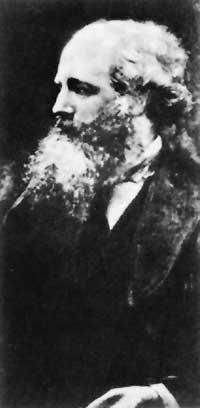
Therefore, the kinetic theory carried out by Bernoulli, Joule and Clausius conformed to the detailed characteristics of the gases. On the other hand, this theory allows calculating speeds, as demonstrated by Waterston and Joule. In 1865 Loschmidt, based on kinetic theory, was able to calculate the number of molecules of a gas in the volume unit at the usual atmospheric pressure and zero degrees in the Celsius.
Maxwell and Boltzmann adapted Gauss's combustion law based on probability theory to speed distribution, according to which they studied the trend that could be the most normal at the speed of molecules and concluded that it corresponded to the maximum of the characteristic called thermodynamic entropy. The law of perfect gases (pV = RT) was known in this century, but at the beginning of real gases some deviations were observed. To correct these deviations, Van der Waals used kinetic theory and in 1873 got the law bearing his name: (p + a/v2) (v - b) = RT, where the constants for each gas a and b are the universal constant R, pressure p and velocity v; this law corrected some of these deviations.
- Robert Boyle. Irish physicist and chemist (1627-1691). He gave the law of gas compressibility, established the modern concept of chemical elements and discovered the function of oxygen in combustion.
- Antoine Laurent de Lavoisier. French chemist (1743-1794). He was one of the founders of modern chemistry. He invented chemical nomenclature.
- John Dalton. British physicist and chemist (1766-1844). He is the creator of atomic theory.
- Dmitri Ivanovitx Mendeleiev. Russian chemist (1834-1907). He published a periodic table of chemical elements (1869) and the gaps left empty have been completed as new elements have been discovered.
- Joseph Louis Proust. French chemist (1754-1826). He was a professor at the Royal Seminary of Bergara. He dictated the law of fixed proportions in 1808.
- Ludwig Boltzmann. Austrian physicist (1844-1906). He dictated the kinetic theory of gases and applied the statistical laws.
- James Clerk Maxwell. Scottish physicist (1831-1879). Through the work on the distribution of velocities of gaseous molecules, thermodynamics worked.





